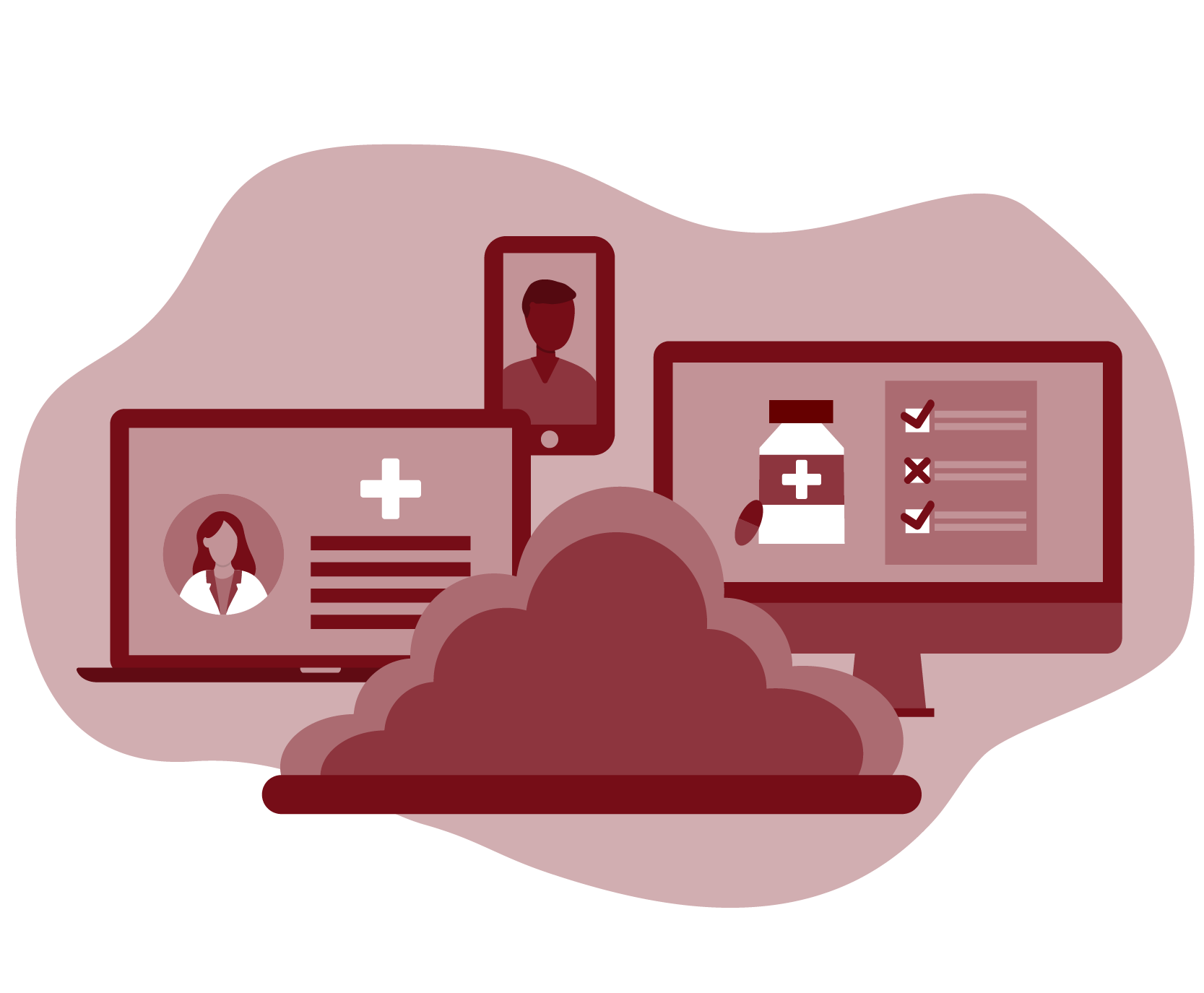FY20 Annual Report: Information Systems
Health Care from Anywhere: The Growth of Telemedicine

Johns Hopkins Community Physicians’ (JHCP) Information Systems (IS) department aims to “provide excellent IT support and customer service for our users, enabling the best patient care” in everything they do. While IS projects were numerous in fiscal year 2020, one stands out, as its affects were felt across the country and across the world: support of JHCP and Johns Hopkins Medicine’s telemedicine efforts.
In March 2020, as the global spread of COVID-19 rapidly gained momentum, JHCP practices had to quickly pivot from in-person appointments to virtual appointments. Embracing telemedicine was the best way to ensure staff, provider and patient safety, while maintaining the highest quality of care possible.
Director of IS Matthew Eyre defines telemedicine as any mode to provide patient care, other than being solely in-person, face-to-face. This definition includes telephone visits and MyChart messaging, as well as hybrid methods, like tele-consults, wherein, for example, a patient at a rural practice would have a consultation with a specialist in Baltimore, while in their provider’s office. The focus for FY 20 efforts, though, was on video visits.
Johns Hopkins Medicine and JHCP’s rapid transition from in-person to video visits was a mammoth achievement. JHCP providers and staff converted in-person appointments to video visits, practically overnight. From January 1, 2020, through March 11, only seven telemedicine visits had been conducted. From March 12 through the end of the month there were 15,342 telemedicine visits (split between video and phone). Finally, the total from March 12 through the end of the fiscal year’s end in June is a staggering 143,436 telemedicine visits. That includes 125,850 video visits and 17,586 phone visits.
Although JHCP was preparing for increased use of telemedicine before the pandemic began, this immediate and drastic pivot to video visits provided no shortage of work for the IS team. They deployed about 500 headsets and 500 webcams to providers and staff over the course of eight weeks, and continue to do so. They also supported the education and training team’s efforts by quickly setting up a phone line for the Video Visit Support Team. The IS team also had to ensure that all workstations were in compliance and prepared for the video visits platforms, coordinating and pushing out new software to desktops.
From the beginning, video visits needed to be as easy as possible for the patient, provider and support staff. With this and quality improvement in mind, the Johns Hopkins Medicine Office of Telemedicine and stakeholders decided to switch video visit platforms. The new platform minimized requirements on the patient-side, decreased complexity on the staff- and provider-side, and increased reliability and video visit capacities. Eyre and team had to ensure that all software was kept up-to-date to make the transition as seamless as possible for patients and providers. The transition would make sure that there were as few barriers as possible to accessing care, and would also maintain telemedicine standardization across JHCP practices and Johns Hopkins Medicine.
Eyre and his team view the drastic pivot to telemedicine as a positive change. He notes enhanced relationships and increased communication between the IS department and operational clinical staff, resulting in the team becoming more in-tune with practice workflows. They were also required to think creatively and become even more flexible. Eyre notes that the team’s ability to leverage the equipment and infrastructure that they already had prepared led them to success.
He also humbly admits that such an endeavor was not without its fair share of failures. “Our providers were really, really resilient,” he says. Luckily for JHCP, so are the teams, like IS, that support them.
